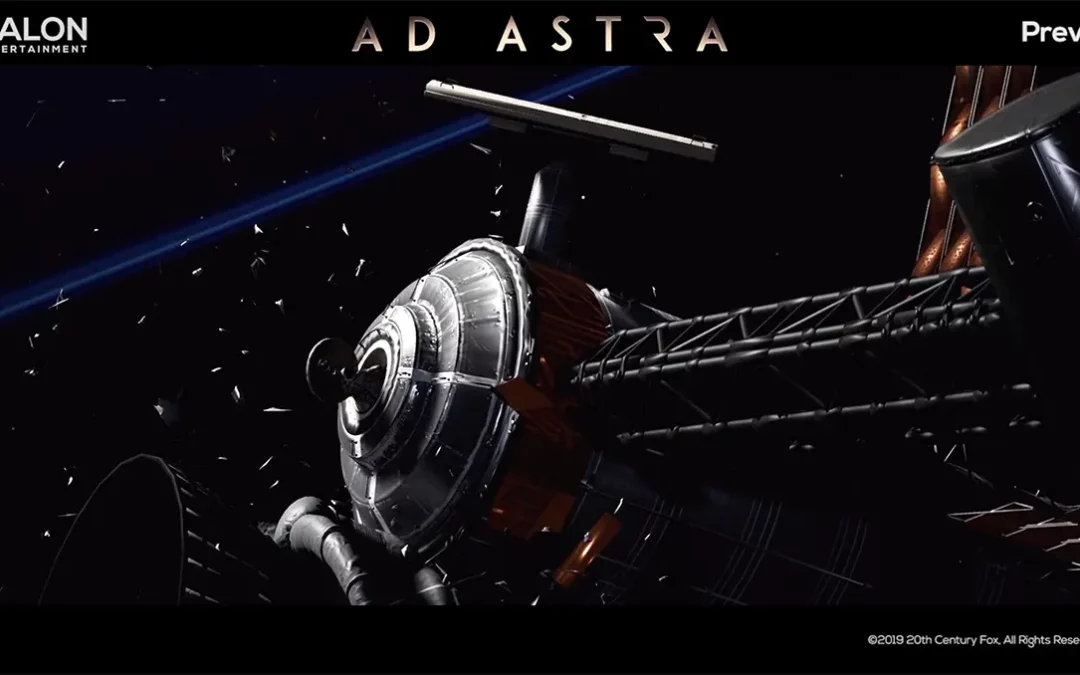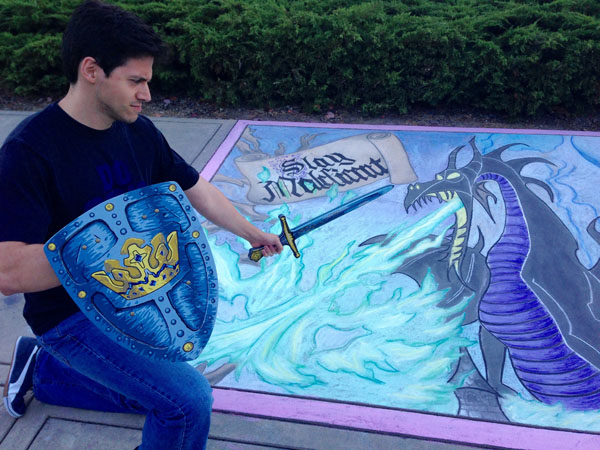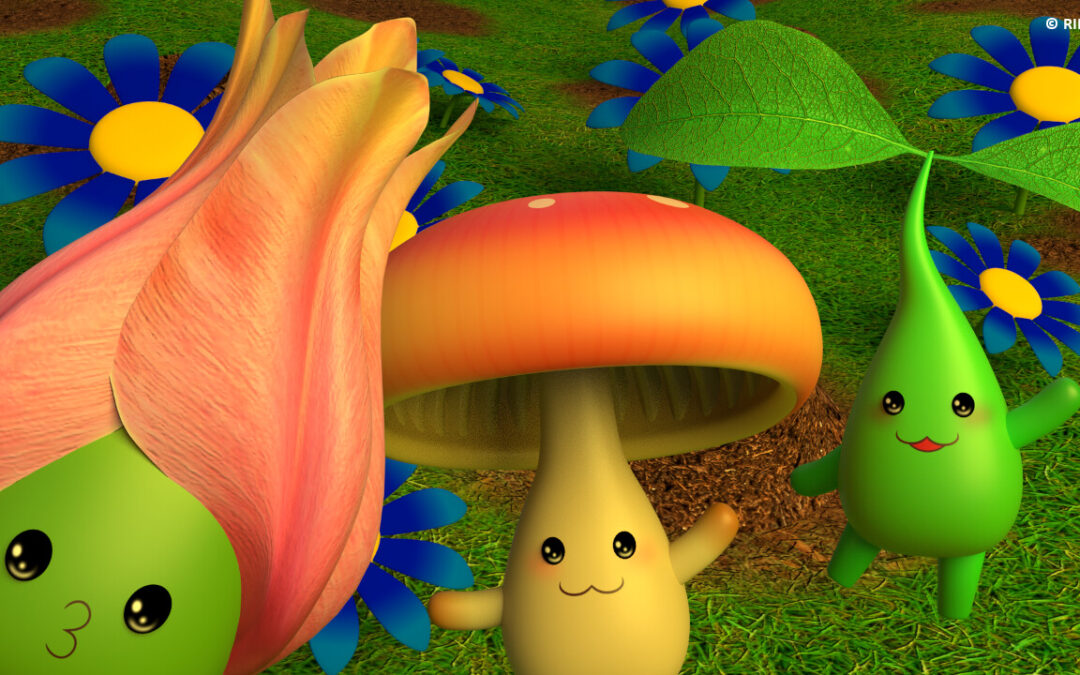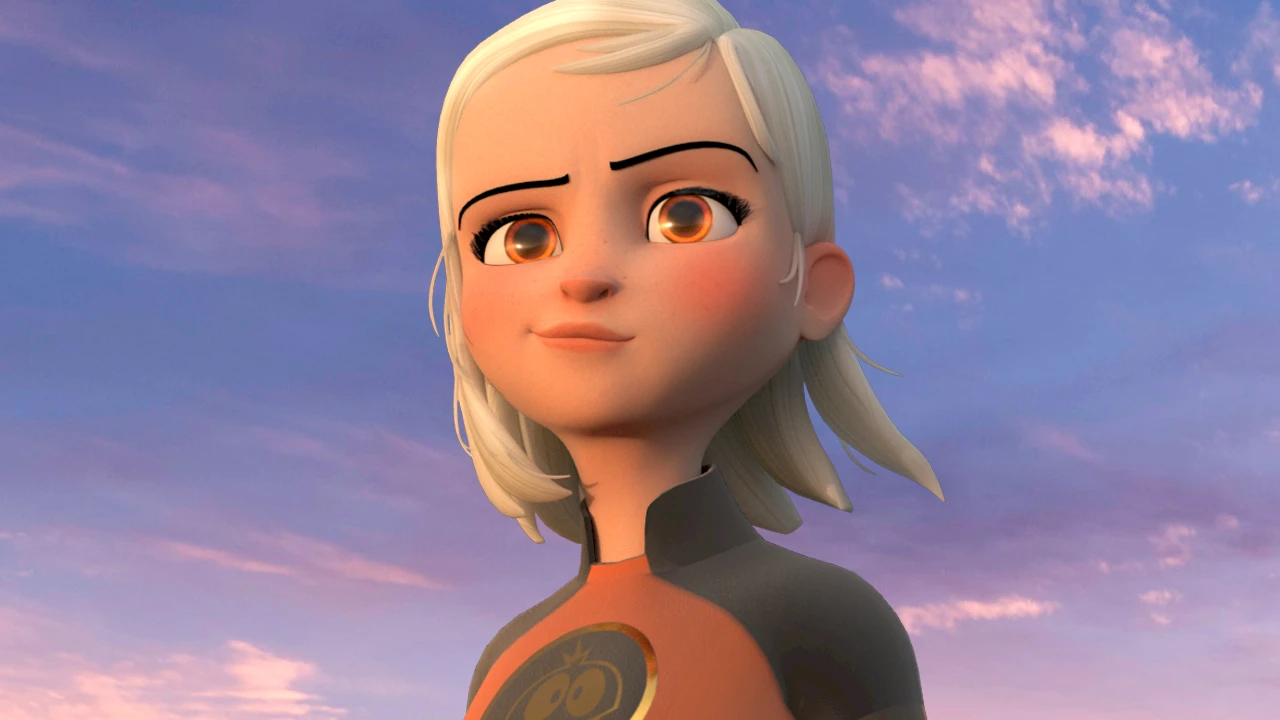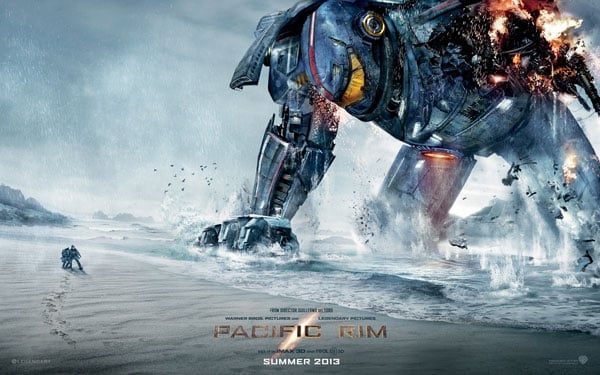
Everything about Pacific Rim is big. Directed by Guillermo del Toro, the Warner Bros’ feature pits giant robots called Jaegars against even more monstrous alien creatures that arise from the Pacific Ocean.
Gypsy Danger, the CG star of the film, stands 250 feet tall. She’s a walking vertical battleship piloted by two humans that sit side-by-side in her head. Arguably the biggest CG character yet to star in a live action film.
Just ask compositing lead Chris Balog of Industrial Light & Magic (ILM), who was responsible for the final look of the giant robot.
“We’ve worked on the idea of having compositing leads for characters in the last couple of years,” Balog says. “We did that on Avengers, and slowly, surely, added more films. “Compositing leads get involved early on to help design the look and create tools for the compositors. Then, we make sure the look is consistent throughout the movie.”
Approximately 100 compositing artists working at ILM’s San Francisco, Vancouver, and Singapore facilities layered together the rendered CG and live action elements to create 1590 final visual effects shots in the film. When Gypsy Danger appeared in live action scenes, Balog and the other compositors fit the CG robot into the real world. But usually, she was in all-CG shots, so they adjusted rendered layers until the shots looked as if they had been shot with a camera in the real world. “We’re pretty much the end of the line,” Balog says.
The beginning of the line for Balog started by meeting with “lookdev TDs” (look development technical director) for Gypsy Danger. “We needed to decide what we could get out of the render and what we could do in composite land,” he says.
“As a compositor, you need to know a lot about how you’re going to put something together, the different treatments you can do. You also have to know a lot about rendering and what pieces you can get from the TDs to create generic compositing scripts.”
For this film, ILM changed from Pixar’s PR RenderMan to Solid Angle’s Arnold rendering software. “We had used RenderMan for as long as I can remember,” Balog says. “So, it was a bit of a learning curve.” Lookdev artists and lighters worked with the Foundry’s Katana. Compositing artists used the Foundry’s Nuke, and it was in Nuke that Balog set up the compositing templates.
One template, for example, helped compositors animate lights on Gypsy’s arm cannon. “The arm cannon has 30 or 40 lights, and Guillermo (del Toro) wanted them to turn on in a progression,” Balog says. “That can be difficult to get right in animation, and it would take a lot of iterations in rendering. But, in compositing, we can animate the lights by hand. We built that as a generic treatment.”
Balog also created generic scripts to help manage the 94 lights on Gypsy Danger’s body. “We wanted the lights to look like they would if they were photographed,” Balog says. “We had treatments that added glows and glints, and on certain frames added a strobe flash like you’d see on an aircraft. After working with lookdev, we asked for render mattes for all the lights; the lights are all broken out into different renders. Depending on what Gypsy was doing, we might get five or 10 layers. A compositor could grab the generic script and attach it to the renders to treat the lights. We would combine light treatments at the end into one layer, but in that layer we might have 10 different distinct glows for lights, 10 different treatments for the lights on the character and each was controllable.”
In many of the shots Gypsy battles CG characters in an all-digital environment whether in the ocean or on land. For each environment, Balog worked with the lookdev TDs, environment TDs, and digimatte artists to develop her look in specific sequences.
“We wanted to develop a template we could use from shot to shot,” Balong says. “So we’d hone in on two or three shots at the beginning of a sequence. We’d consider the environment, the effects, the rain, lightning, the overall look and feel for the sequence. Then we created a template for the compositors to use.”
Nuke’s deep compositing feature helped the artists manage the work. “Using deep pixels, we could generate holdouts within Nuke,” Balog says. “The advantage is that if the animation changes, the effects and rendering TDs don’t need to generate the holdouts. We do them in compositing using the deep pixel information. The down side is heavier processing. We take a performance hit.”
Hong Kong’s colorful neon-lit nighttime environment was a particular challenge. “We worked with lookdev to see how they would render the sequences,” Balog. “Gypsy is shiny, metallic. She needed to reflect those neon lights. The environment TDs and digimatte artists gave us the environments and they were so glow-y, we needed neon lighting passes to tie Gypsy into the environment. For all the sequences, we asked for lighting passes we could plus on top, but for Hong Kong, we needed washes of red, blue, and green.”
The compositing artists also added rain in Hong Kong and paid attention to how light affected the rain. ”Also, when you see rainstorms, you see bouncing water on the ground, so we created renders to mimic that,” Balog says. “The effects team would give us passes and we’d map little drops onto ground planes in geometry.”
One of the most difficult sequences for Balog takes place in Hong Kong. “There’s a moment when Gypsy is fighting Hitachi, the alien with the wings that flies around,” Balog says. “Gypsy loses sight of Hitachi. She walks down the street and stops. Hitachi bursts out through a building, slams into another building, and walks through another building.”
To put those shots together, the compositors worked with more than 150 render layers. “We had a lot of effects and a lot of layers,” Balog says. “The building itself. The destruction as the character comes through it. We had glass renders. Smoke. Debris. Then another building and more renders for that building.”
Imagine the work from several departments – animation, effects, texture mapping and painting, simulation, and digital matte painting – all funneling into the rendering system and then out again to the compositors in multiple layers.
“When the sequences are all CG, the work is similar to doing a CG feature,” Balog says. “And this was our largest show outside of Rango, which was all CG. The difference is in what you try to achieve. We had the added challenge of making it look like the shots were real plates.”
Although the layers fed to the compositing department in many shots had no live action elements or live action plates, Balog and the compositors referenced live action footage to create the believable sequences.
“The best thing you can do as a compositor is to look for real reference,” he says. “We try to make sure that what we’re doing looks similar to photography. I’m constantly looking at things, finding nuances in photography that I try to replicate. A lot of our sequences took place in rainstorms, so I looked at movies that took place at night, in cities, in the rain; movies that were shot practically. And, I’m on YouTube a lot.”
Balog learned his skills largely on the job. A former safety and security officer at Pixar Animation Studios, he joined ILM as a resource assistant, using technical skills developed at Pixar. Over time, and with help from the crew at ILM, he grew into the role of digital artist. In 2005, he received technical support credit on Harry Potter and the Goblet of Fire. In 2007, he was a digital artist on Pirates of the Caribbean: At World’s End. Now, he is a compositing sequence supervisor and, for Pacific Rim, Gypsy Danger’s lead compositor. In the short time he has worked as a compositor, Balog has already received two VES nominations for outstanding compositing in The Avengers and Transformers: Dark of the Moon.
He counts Pacific Rim as one of the most fun. “We had a great director with great energy,” he says. “It felt very collaborative. And, the work itself was great. A monster bursting through a building? Yeah, I’m up for that. Giant robots fighting giant monsters in giant cities and oceans. For an artist, what’s not to like?”
